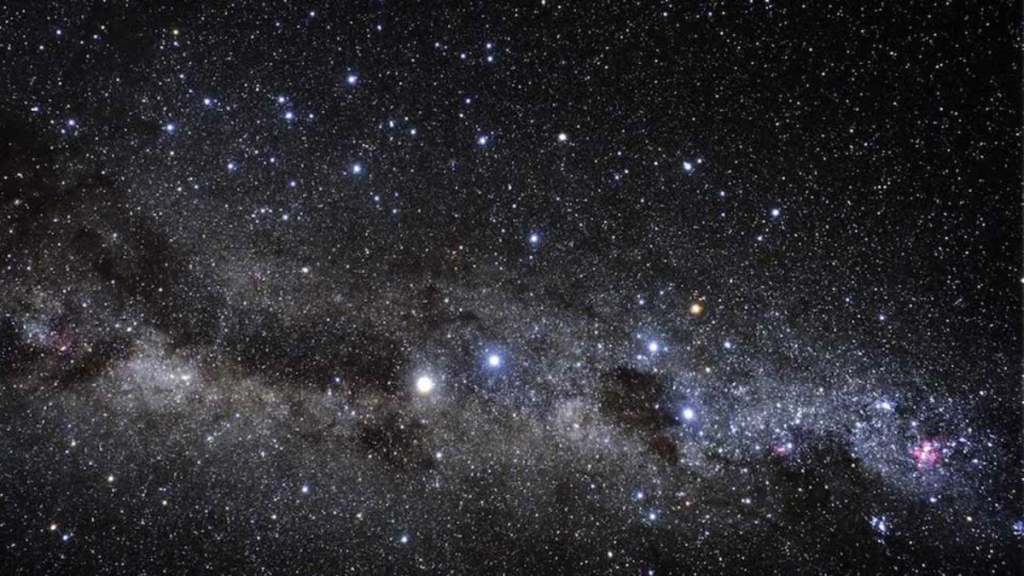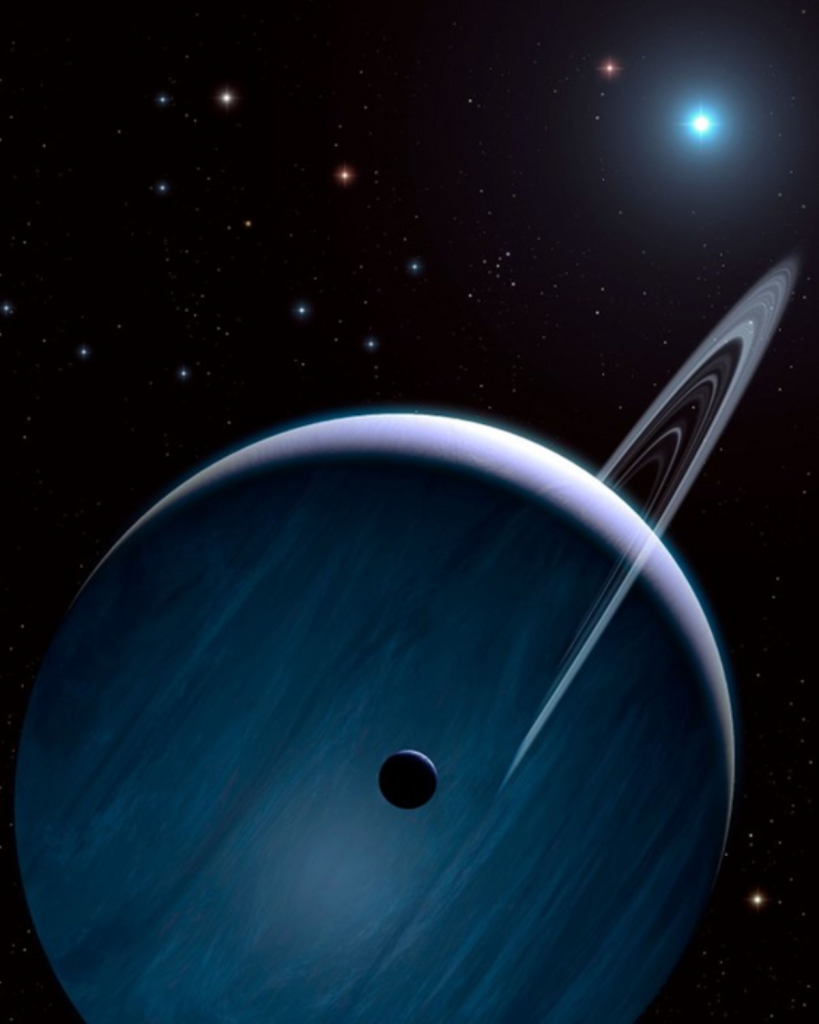
Young stars more than twice the Sun’s mass generate extreme radiation that makes it very challenging for planets to coalesce from dust and gas. And yet a handful of exoplanets more massive than Jupiter and on orbits more distant than Pluto’s have been discovered around these O and B stars. New research published in Monthly Notices of the Royal Astronomical Society suggests that these planets might have originally formed around smaller nearby stars and were later stolen by the more massive ones.
“Essentially, this is a planetary heist,” coauthor Emma Daffern-Powell said in a statement. Daffern-Powell is an astronomer at the University of Sheffield in the United Kingdom. “We used computer simulations to show that the theft or capture of these [planets] occurs on average once in the first 10 million years of the evolution of a star-forming region.”
Planet Thieves
Astronomers theorize that stars like our Sun build planets from a swirling disk of dust and gas. (Many observations support this theory.) Gravitational instabilities in the disk cause small clumps of planetary material to collapse inward and accrete more material. However, extreme stellar radiation like the kind produced by O and B stars (at least twice but sometimes more than 20 or 50 times the Sun’s mass) can disrupt accretion through a process called photoevaporation.
“It’s hard to find planets around O and B stars, which are bright stars,” said lead author Richard Parker, an astrophysicist at the University of Sheffield in the United Kingdom. “There’s nothing at first sight to stop O [and] B stars forming planets.…However, the intense far ultraviolet and extreme ultraviolet radiation is powerful enough to evaporate gas from protoplanetary disks, and if there is no gas, then it is impossible to form Jupiter-mass planets in the disk.”

That doesn’t mean that massive stars don’t host exoplanets. A recent survey of a young stellar group, the Scorpius-Centaurus (Sco-Cen) association, which contains dozens of O and B stars, confirmed at least two exoplanets and one planet candidate all larger than Jupiter around these inhospitable stars.
Trying to explain these planets, Parker and Daffern-Powell explored the likelihood that the planets could have formed elsewhere and later made their way into orbits around massive stars. They conducted computer simulations that modeled a cluster of young stars, some of which were given simulated exoplanets, and tracked the fates of these exoplanets for 10 million years.
The simulation showed that when a less massive star with an exoplanet got too close to a more massive star, the massive star ripped the planet out of its orbit. Either the more massive star would immediately steal the planet for itself, or the planet would be left floating freely within the group; that planet might later be captured by a different massive star. After repeating the simulation several times, the researchers found that on average, O and B stars would steal or capture around one exoplanet every 10 million years from a lower-mass star.
Forming Planetary Systems from the Outside
The simulations revealed that captured planets can have orbits that range in size from 4 times the Earth–Sun distance (astronomical units, or AU) to 10,000 AU. Stolen planets were more likely to orbit within 200 AU. Two of the three exoplanets discovered so far in Sco-Cen orbit more than 200 AU from their stars, which suggests that they were captured rather than stolen from the stars that grew them. (Sco-Cen also contains a large trove of free-floating or rogue planets, which may eventually be captured.)
“Their scenario seems totally plausible,” commented Sean Raymond, an astronomer at the Laboratoire d’Astrophysique de Bordeaux in France who was not involved with the study. “It’s new and interesting and carefully simulated. I just think it’s really cool.”
The researchers acknowledged that because of computational limitations, their simulations did not include binary stars, which are very common in young stellar groups. With stronger gravity, two stars are more likely to capture or steal a planet than one star, Parker explained, so it’s possible that more planets around O and B stars might be stolen or captured than these simulations suggest. The team plans to include binary stars in future simulations.
“I think the role of star clusters on planetary systems is really undervalued,” Raymond said. “This work shows that instead of looking within a planetary system, we should sometimes be thinking about what happened on the outside.”
—Kimberly M. S. Cartier (@AstroKimCartier), Staff Writer
This article was originally published in Eos and republished under a CC BY-NC-ND 3.0 license.









